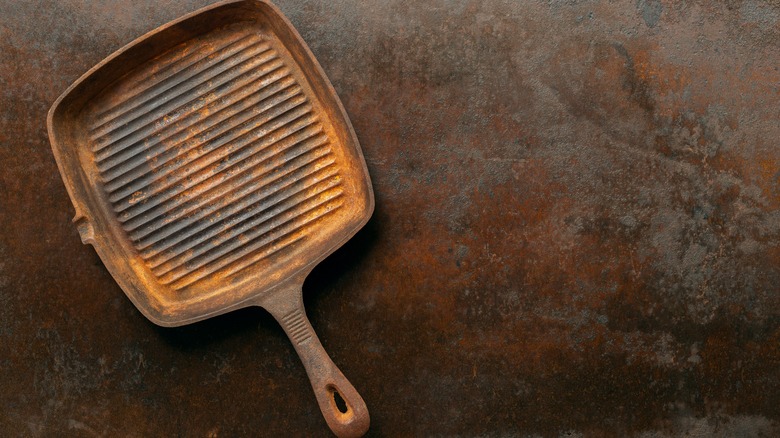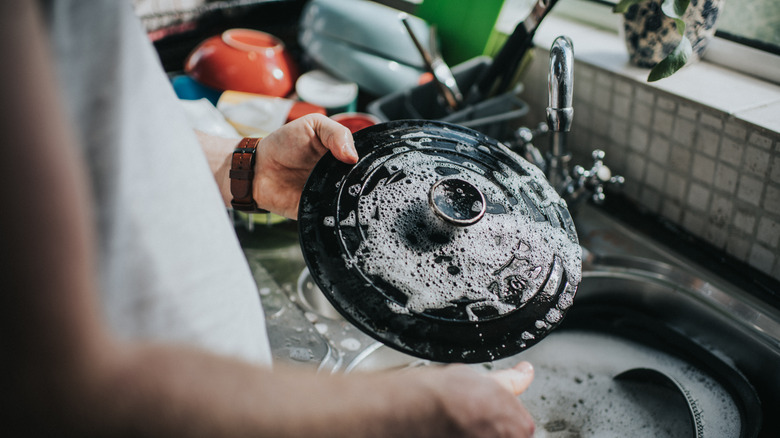The Kitchen Tool You Need To Easily Remove Rust From Your Cast Iron Skillet
A cast iron skillet is one of the best investments you can make for your kitchen. It is incredibly versatile and can be used to make just about anything, from sweet dutch baby pancakes to spicy tomatillo shakshuka. Beyond versatility, it also plays a part in how your food tastes. Because it retains and distributes heat so well, you will notice a difference in the quality of your food once you begin cooking with cast iron so much so that it may become your skillet of choice.
The one thing that often dissuades people from making the switch is the fear of cleaning it, because it can be a bit fussy if you aren't dutiful. For instance, if you leave it out to soak overnight, you might be alarmed to find an unpleasant rusty mess. Don't be alarmed though: Cast iron is quite forgiving, so if it rusts, all you need is some Scotch-Brite steel wool, and you'll be back on track.
To remove rust from your cast iron skillet, you'll want to scrub it really well with steel wool first. Steel wool isn't something you'll want to use for your everyday cleaning routine; if you use it too much, it will remove the seasoning you've worked hard to maintain. Rust, however, can be difficult to remove with just a sponge and some water, so steel wool is the tool you need to remove all of that corrosion much quicker.
If steel wool doesn't cut it, try this instead
Once you get all of the grime off with steel wool, clean it with a bit of soap, then dry it off with a paper towel. Preheat your oven to 350 degrees Fahrenheit. Then, coat the skillet with a small amount of cooking oil, placing it upside down in the center of your preheated oven with a baking tray underneath it to catch any drippings. Leave it in the oven for an hour and, when you take it out, it'll be as good as new.
If your cast iron skillet is worse than the average overnight case of rust and steel wool on its own doesn't do the trick, try using vinegar. Before attempting to scrub everything off, soak the skillet in a 1:1 solution of white vinegar and water for an hour. Vinegar's acidity can help dissolve the build-up on your skillet while also killing off bacteria. If you're working with a second-hand skillet you thrifted, this is something you'll definitely want to do before using it to make sure it's extra clean. Once you've successfully removed all of the grime and rust, you'll be able to enjoy all that the iconic cast iron skillet has to offer.

